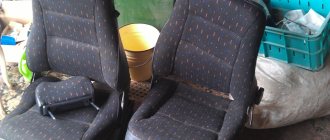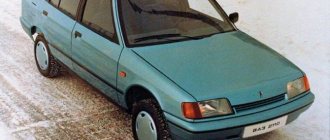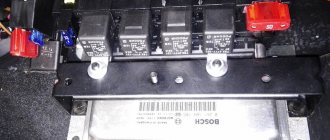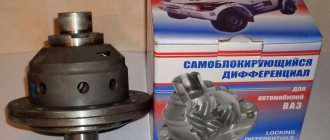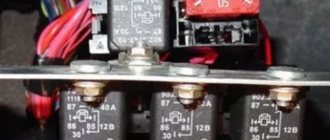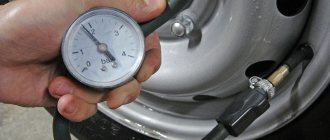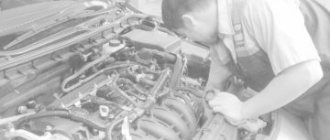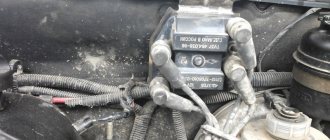Niva Chevrolet with an engine from Priora installation
Niva 4x4 - installation of a 1.9 l engine, 16 cl - 126 horsepower, e-gas
Niva Chevrolet after Priora. First impressions.
NIVA with an engine from PRIORA, Well, AVTOVAZ.
NIVA TUNING installation of a 16 valve engine, dream Niva water
Niva Chevrolet with an engine from Priora issue 2
Review of the most powerful production Chevrolet Niva FAM-1 with Opel Z18XE engine (122 HP)
Chevy Niva 16V Turbo
Niva with Z18XE engine.
Replacing an engine with a unit from Priora (VAZ-2170) is not a difficult procedure, because the installation is similar to installing an engine 2112 or 21124 and takes place without significant differences. Replacement is possible on all cars of the Lada Samara-2 family, but in the article we will consider case 2114.
So, the progress of work on changing the VAZ-2114 engine with your own hands:
- We dismantle all attachments, a ramp with injectors, a receiver and an exhaust manifold,
- We install the engine on standard mounts and connect it to the gearbox. If the “box” is 2110 or 2170, no problems, you just need to change the standard G8 starter (2108-2114). If a KATEK gear starter is installed, you can only change the overrunning clutch and head; if the BATE starter is installed, the entire starter will also have to be changed,
- In order not to figure out how to lay a new fuel line and replace the fuel pump, the easiest way is to buy a ramp from 2112, which already has a standard “return” (a minimum of DIY work is probably the best option),
- With a ramp, immediately buy long nozzles. There is no need to connect the ramp to the engine yet!
- We advance the receiver, push through the ramp with installed injectors, put it in the wells and screw the ramp. Only now can you press the receiver into place and screw it on (watch the rubber seals),
- And now we put the entire “mount” back.
- There may be problems with the ignition coil due to lack of space. You’ll think of something (you can put the valve cover from 2112, and put the ignition coil in place of the module, redoing the mount),
- The conductors going to the injectors need to be lengthened. But it’s better to change them to longer and thicker ones (you need 40 cm more),
- You can throw out the original collector and catalyst and install a “4-2-1 spider” with a hole under the DC (the wires are difficult to reach, it is advisable to lengthen them),
- After the spider, you can immediately attach an elastic corrugated bellows.
- The VAZ-2114 engine cover fits if you cut it a little at the front.
- The TV may “break” near the radiator mounts. It needs to be strengthened (for example, weld a corner or install wishbones).
First of all, you need to install the receiver (not an easy task, I tell you),
We also extend the wires to the phase sensor,
You need to pull out the wire from the pigtail to the oil pressure sensor, the rest is fine.
The ECU can be left stock.
Unfortunately, the systems are completely different.
If you have the financial opportunity, you need to replace the radiator with a 2112 (slightly changing the seat, since the 12th one is slightly wider). As a last resort, you can leave the “native” one.
The thermostat fits the factory one (where the heater connects directly to it, and not to the reservoir hose). Imported analogues are no different. Depending on the old thermostat, it may be necessary to replace the hoses on the radiator (the upper one comes from 2112, the lower one from Kalina),
The cooling fan does not fit and touches the receiver; installing a fan from the Niva (which has two impellers on the outside) saves the day. But in this case it is necessary to install an intermediate relay (since the safety block does not pull). If you can figure out how to do it differently, write to us and we’ll discuss it.
In general, with this design of the system, everything is in order with cooling, but it is still better to replace the radiator with a 2112.
The generator with a standard belt fits well on the bracket from 2114.
The original ECU is capable of starting the engine without flashing it.(!) So you can get to the mechanic on your own. Sometimes it stalls, the consumption is high, but it still drives not bad.
If desired, install an additional (fourth) engine mount. It's not expensive, but it's a cool thing.
That's all, tuning the VAZ-2114 by changing the engine is over. Have a nice ride!
Many owners of domestic cars are thinking about modifying their “iron horses”. Considering that more modern models are equipped with injectors, it is possible to install a 16-valve power unit on them. The Niva-Chevrolet with an engine from the Priora, as well as classic VAZ models with a similar modified engine, are widely popular.
Features of installation of the power unit
Installing a Priora engine on a Niva-Chevrolet or VAZ 2107 will take one or two days from a specialist. But first you should devote a lot of time and money to preparatory work. First you need to buy the engine itself. If you purchased a used motor, you need to rebuild it, which will further extend its service life.
Another advantage of disassembling and inspecting the unit is the ease of installation of transition elements, especially if the parts for the Chevrolet Niva with the Priora engine were made by hand. It is better to carry out manipulations with a screwed oil pan, which will also require modification.
Owner reviews
The best recommendations can be given by the direct owners of the model in question, who have tested the car in various weather and road conditions. If you take a Chevrolet Niva with an engine from a Priora, reviews from owners indicate that the car has changed for the better. Special benefits include the following:
- the power unit has a solid reserve before major overhaul;
- fuel consumption has decreased, quite noticeably;
- high speed characteristics and power;
- reliability of the unit;
- high performance characteristics of the motor.
It’s not difficult to create a Niva-Chevrolet with an engine from a Priora. Some modifications to the cooling system and the seat for the unit will be required. All manipulations can be completed in just a couple of days.
The disadvantages of the device in question include one point that was noticed by some owners and specialists. If the timing belt breaks, the pistons inevitably interact with the valves, causing the latter to bend. To avoid this, you can purchase special pistons with recesses for the valves.
Start of preparatory work
Preparations for installation should begin by dismantling the flywheel of the new power unit. Its teeth will be incorrectly positioned in relation to the starter gear. It is necessary to purchase a suitable crown and place it on the flywheel.
It must be taken into account that the Chevrolet Niva with the Priora engine is modified only in the engine part. The gearbox remains unchanged, so care should be taken to ensure reliable and correct joining of these two blocks. It is optimal to carry out this operation using a special adapter plate. You can buy a ready-made element or make it to order. An alternative to connecting the gearbox and engine would be to fix the engine cylinder block directly to the gearbox. In this case, only three mounting bolts will be involved. Many car enthusiasts who have tested this in practice claim that the clutch is quite reliable.
Bottom line
Having studied all the characteristics of the engine, it can be noted that the Priora power unit is a reliable and well-developed engine. The use of modern technologies and new developments has allowed domestic developers to create a reliable and high-quality unit.
Additionally, this unit is supported by reviews from owners and the desire of many car enthusiasts, despite the additional costs of time and money, to equip their vehicle with a Priora engine.
"Niva-Chevrolet" with an engine from "Priora": the main stage of preparatory work
The updated engine will be slightly moved towards the cabin. To install it correctly, it is necessary to cut out a part of the metal partition separating the engine unit and the interior of the car. It is recommended to carry out the manipulation carefully so as not to cut out the excess part, since the element being processed ensures the rigidity of the body. Alternatively, you can use a grinder saw if you have the appropriate experience.
The end part of the crankshaft of the newly installed engine will require the installation of a VAZ-2107 and with an engine from Priora the element will need to be adjusted. Any turner will help you cope with this problem; the work will not take much time. Adapters with holes should be prepared for the motor mounting pads.
The final stage of preparatory work
If the car being modified was equipped with a carburetor system, you should install a remote electric fuel pump, a gas pedal drive with a cable, and a fuel filter. A Volga injection element with an injector is quite suitable. You will also need to install a special adapter for the clutch block.
If the car is equipped with a fuel injection system, then installing and connecting the control electronics will not pose any special problems. When installing a VAZ-2112 or Priora engine on a Niva, you will have to spend a lot of time on preparation. However, the subsequent effect and the new “heart” of the iron horse are worth all the effort.
Installation of the power unit
Having completed all the preparatory work, you can begin installing the motor. For a professional repairman, this process rarely takes more than one day. Personal participation will require more time and effort.
The greatest amount of work will have to be done with the modification of the cooling and exhaust systems. An old manifold from a VAZ of early production will not fit the “Prior” engine, as well as connecting pipes and some elements of the cooling system. It is difficult to purchase the parts in question ready-made, but they can be made to order or using gas welding.
Engine advantages
The engine with 16 valves turned out to be very successful. Many owners install it not only on VAZ “classics”, but also on new models (“Niva-Chevrolet”, 2109, 2114). On such cars, installation of the power unit is greatly facilitated due to the combination and identity of most of the elements.
The VAZ-2107 with an engine from Priora has the following advantages:
A Chevrolet Niva with an engine from a Priora, the price of which depends mainly on the general condition, turns out to be more economical without losing maneuverability and power. The unit will cost from 35 to 100 thousand rubles.
Peculiarities
The Niva-Chevrolet with the Priora engine has some features compared to similar classic VAZ models. Firstly, installation of the power unit is simplified, since the location of the motor is identical. Secondly, variations were produced with almost the same engine as the Priora. In addition, a new production version of the domestic SUV is being developed, to which the engine from Priora, considered one of the best among our manufacturers, is adapted.
Considering the high service life and versatility of the motor in question, its installation is advisable on many VAZ models. Moreover, relatively modern modifications will require a minimum of modifications, while more classic versions will gain new power and speed.
Having studied all the characteristics of the engine, it can be noted that the Priora power unit is a reliable and well-developed engine. The use of modern technologies and new developments has allowed domestic developers to create a reliable and high-quality unit.
Additionally, this unit is supported by reviews from owners and the desire of many car enthusiasts, despite the additional costs of time and money, to equip their vehicle with a Priora engine.
We install the engine on the Niva from a foreign car. It's worth it
Why do some owners install a foreign car engine on the Niva? Old Russian cars like the VAZ-2121 Niva, VAZ-2107, VAZ-2108 at this time may seem at least not profitable, and at most not at all capable.
At the moment, you won’t see an entrepreneur driving a Veil, although not long ago it was one of the most massive cars; its cross-country ability was unattainable for the EU and the USA. But not now…
What problems can installing a foreign car engine on a Niva help solve? If you need to think about what and how to do to make the Niva profitable and convenient for the modern world, then change your heart! In fact, you can put almost any engine removed from a foreign car on the Niva.
However, the engine must meet several requirements
: to fit inside the hood of the car so as not to cut off additional parts (this can have a bad effect later_. And most importantly, the engine power should not greatly exceed the power of its predecessor. After all, if you install an engine that is too powerful, the car’s design simply won’t withstand it; cars of that time were not created for power and speed, but for reliability.
Read
The new foreign car can barely withstand a head-on blow with the Niva, and VAZ has a great chance of winning. But Niva, when making a sharp turn at a speed of 150 km. at an hour it will most likely fly into a ditch, and the foreign car will continue on its way.
New items equipped with the engine in question
Soon, VAZ developers plan to put into mass production the updated Niva, which will be equipped with an engine from the Priora. The new power unit will make it possible to significantly reduce fuel consumption, while increasing the vehicle’s speed performance.
The plant is actively working to adapt the engine to the Niva. The car can be produced in two variations: with a unit with a capacity of 98 horsepower or a modified analogue that pulls 106 horses and has a torque of 148 Nm. In addition to the updated engine, the car in question will receive a new steering rack, subframe, improved seats, heating, and air conditioning will be installed.
Technical characteristics of the latest modifications of the Priora engine
The common model of the engine in question is released under the index 21126. The unit has a displacement of 1.6 liters and a power of 98 horsepower. In 2013, a new modification was released, which is equipped with the VAZ-2107.
For greater clarity, below is a table with technical indicators of the Priora power unit (21127).
| Year of issue | 2013 |
| Material of manufacture | Cast iron |
| Cylinder arrangement | Inline/4 |
| Number of valves | 16 |
| Piston stroke (cm) | 7,56 |
| Cylinder diameter (cm)/compression ratio | 8,2/11 |
| Working volume (cc. cm) | 1596 |
| Power (hp) | 106 |
| Torque (Nm) | 148 |
| Fuel consumption per 100 km, combined cycle (l) | 7 |
"Chevrolet Niva"
"Niva-Chevrolet" with an engine from "Priora" has the following technical characteristics of the power unit, presented in the table.
The car reaches a maximum speed of 150 km/h, acceleration time to hundreds is 17 seconds. The fuel tank holds 58 liters, while consuming 9.6 l/100 km in mixed driving mode.
This article will discuss the possibility of installing an engine from Priora on the VAZ 2113-15 family.
Full technical specifications of the Chevrolet Niva - summary table
| Parameter | Chevrolet Niva 1.7 80 hp |
| Engine | |
| Engine code | 2123 |
| engine's type | petrol |
| Injection type | distributed |
| Supercharging | No |
| Number of cylinders | 4 |
| Cylinder arrangement | in-line |
| Number of valves per cylinder | 2 |
| Volume, cubic cm. | 1690 |
| Power, hp (at rpm) | 80 (5000) |
| Torque, N*m (at rpm) | 127.5 (4000) |
| Transmission | |
| Drive unit | full |
| Transmission | 5 manual transmission |
| Suspension | |
| Front suspension type | independent multi-link |
| Rear suspension type | dependent |
| Brake system | |
| Front brakes | disk |
| Rear brakes | drums |
| Steering | |
| Amplifier type | hydraulic |
| Tires | |
| Tire size | 205/75 R15 / 205/70 R15 / 215/65 R16 |
| Disk size | 6.0Jx15 / 6.0Jx15 / 6.5Jx16 |
| Fuel | |
| Fuel type | AI-95 |
| Environmental class | Euro-5 (Euro-4*) |
| Tank volume, l | 58 |
| Fuel consumption | |
| Urban cycle, l/100 km | 13.2 (14.1) |
| Extra-urban cycle, l/100 km | 8.4 (8.8) |
| Combined cycle, l/100 km | 10.2 (10.8) |
| dimensions | |
| Number of seats | 5 |
| Number of doors | 4 |
| Length, mm | 4048 |
| Width, mm | 1770 |
| Height, mm | 1652 |
| Wheelbase, mm | 2450 |
| Front wheel track, mm | 1466 |
| Rear wheel track, mm | 1456 |
| Front overhang, mm | 721 |
| Rear overhang, mm | 748 |
| Trunk volume (min/max), l | 320/650 |
| Ground clearance (clearance), mm | 200 |
| Geometric parameters | |
| Entry angle, degrees | 37 |
| Departure angle, degrees | 35 |
| Weight | |
| Curb (min/max), kg | 1410 |
| Full, kg | 1860 |
| Maximum trailer weight (equipped with brakes), kg | 1200 |
| Maximum trailer weight (not equipped with brakes), kg | 600 |
| Dynamic characteristics | |
| Maximum speed, km/h | 140 |
| Acceleration time to 100 km/h, s | 19.0 |
* – engine data before modernization in 2020 is indicated in brackets.
| Parameter | Chevrolet Niva 1.7 80 hp | Chevrolet Niva 1.8 122 hp |
| Engine | ||
| Engine code | 2123 | Z18XE |
| engine's type | petrol | |
| Injection type | distributed | |
| Supercharging | No | |
| Number of cylinders | 4 | |
| Cylinder arrangement | in-line | |
| Number of valves per cylinder | 2 | 4 |
| Volume, cubic cm. | 1690 | 1797 |
| Power, hp (at rpm) | 80 (5000) | 122 (5600) |
| Torque, N*m (at rpm) | 128 (4000) | 167 (3800) |
| Transmission | ||
| Drive unit | full | |
| Transmission | 5 manual transmission | |
| Suspension | ||
| Front suspension type | independent multi-link | |
| Rear suspension type | dependent | |
| Brake system | ||
| Front brakes | disk | |
| Rear brakes | drums | |
| Steering | ||
| Amplifier type | hydraulic | |
| Tires | ||
| Tire size | 205/70 R15 | |
| Disk size | 6.0Jx15 | |
| Fuel | ||
| Fuel type | AI-92 | |
| Environmental class | n/a | |
| Tank volume, l | 58 | |
| Fuel consumption | ||
| Urban cycle, l/100 km | 14.2 | 12.8 |
| Extra-urban cycle, l/100 km | 8.9 | 8.5 |
| Combined cycle, l/100 km | 10.9 | 10.1 |
| dimensions | ||
| Number of seats | 5 | |
| Number of doors | 4 | |
| Length, mm | 4048 | |
| Width, mm | 1770 | |
| Height, mm | 1652 | |
| Wheelbase, mm | 2450 | |
| Front wheel track, mm | 1450 | |
| Rear wheel track, mm | 1440 | |
| Trunk volume (min/max), l | 320/650 | |
| Ground clearance (clearance), mm | 200 | |
| Weight | ||
| Curb (min/max), kg | 1400 | 1520 |
| Full, kg | 1850 | 1870 |
| Maximum trailer weight (equipped with brakes), kg | n/a | n/a |
| Maximum trailer weight (not equipped with brakes), kg | n/a | n/a |
| Dynamic characteristics | ||
| Maximum speed, km/h | 140 | 165 |
| Acceleration time to 100 km/h, s | 19.0 | 12.0 |
Work order
First, all attachments are dismantled - the receiver, exhaust manifold, etc. After this, the engine is installed on standard mounts and connected to the gearbox. To avoid problems with changing the fuel pump and when laying a new fuel line, you need to purchase a standard ramp.
In addition to the ramp, you will need longer fuel injectors. The ramp does not connect to the engine immediately. You must first install the receiver. This process is quite labor-intensive - you need to tighten all the cushions and raise the car with a jack. After this, you can push the receiver through and insert the ramp with injectors. The ramp is screwed after the nozzles are installed on the wells. After this, the receiver sits in place and is secured. When performing work, care must be taken to ensure that the rubber seals on the receiver are not damaged. Next, all elements of attachments are installed in their standard places.
Now you can do the electrical wiring. First you need to disassemble the ignition. Since the car does not have four ignition coils, a standard one is installed, and only high-voltage wires are needed from the Priora. It will be necessary to increase the wiring by about 40 cm, since its length may not be sufficient. The same applies to the phase sensor.
Next you need to deal with the exhaust. It is necessary to dismantle the old exhaust manifold with the catalyst, and in its place a 4-2-1 “spider” system with holes for the DC is installed. The corrugation is also placed there. The exhaust pipe is completely replaced, and the standard can is modified.
It is not necessary to change the thermostat - you can leave the standard one, but it will need to be configured correctly. If the cooling fan is in contact with the receiver, you can replace it with a Niva fan, which has two impellers on the outside. The hoses on the radiator need to be replaced. The generator is mounted on standard mountings; its belt does not need to be changed.
In order for the engine to operate normally, the injectors must be flashed and calibrated. The decorative engine grille can be left in place, you just have to make cuts on its front side. The entire structure can be significantly strengthened by installing a brace with a fourth mount for the power unit - this will not cost much at all.
After all installation work has been completed, new filters are installed, oil is added and the engine is run in. You cannot immediately accelerate the engine to maximum speed, since at this time the engine components are grinding in - parts can become deformed from excessive load, which can lead to engine failure. In the corresponding section of our website you can find an article about
Good afternoon, I haven’t written for a long time: (because I didn’t have time... I assembled my Priora’s engine a long time ago, and even managed to break it in;) I drove 2000 km on it. Well, now about the most important thing... how and from what we assembled the new heart :) Action plan: 1. I decided that I was making a motor for myself, which means I will sharpen the block + After boring, do honing. I didn’t think for a long time and turned to Auto VAZ at Chekistov :) where the mechanic guy kindly and clearly explained everything that first buy the pistons, and then I’ll make everything the right size for you. 2. An hour later I was already at the 50th Anniversary of October in the Ladya store. It was this store that became my favorite in Tyumen:) the sellers understand what they are selling + an adequate price tag for spare parts and their availability. Of course, there is also a defect there, which I changed without problems after 2 weeks :) the timing belt roller made noise... I bought: STK pistons VAZ 21126 - 82.5 (Splitless with anti-friction coating) for a 75.6 mm crankshaft in a 197.1 mm block, for connecting rods 133.3 mm and pins d18 mm) rings 1.2 mm/1.5 mm/2.0 mm
STK plug-inless with a displacer To compensate for the compression ratio, the pistons have a displacer, and according to the manufacturer, the compression ratio with these pistons remains unchanged.
Piston ring set d82.50 mm “PRIMA” 1.2 mm, 1.5 mm, 2 mm
Started in Auto VAZ for boring. I liked that I drove up to the machine itself by car, otherwise I had bad thoughts about how to carry the block through the whole workshop :)
First of all, the Master bored out the damaged cylinder, and then all the others. I liked that the Master answered all my questions that I asked :) he even explained why and what he was doing! A big + and respect to the master for his patience))) because after finishing the boring I took out another crankshaft and asked him to check it, he kindly agreed and checked it for free... I'M SHOCKED 0_0!
3. In the evening we already started assembling the beast... I won’t describe everything there are too many little details :) I’ll highlight only the most important things...
VAZ 2123 engine - features
Features of a diesel engine, pros and cons
The VAZ 2123 engine for the Chevrolet Niva has received many changes that have a better effect on its functional characteristics.
Unlike its predecessor models, it has a different generator location. He is now on top.
1 — oil pan; 2 — main bearing cover; 3 — connecting rod cover; 4 - crankshaft; 5 — connecting rod; 6 - piston; 7 — piston rings; 8 - valve; 9 — valve guide; 10 — valve springs; 11 - plate; 12 - camshaft; 13 — cylinder head cover; 14 — valve lever; 15 - hydraulic support; 16 — cylinder head; 17 — spark plug; 18 — cylinder head gasket; 19 — generator bracket; 20 — cylinder block; 21 — oil pump gear retainer; 22 — oil pump gear; 23 — oil filter bracket; 24 — oil pan gasket; 25 - oil pump
The new cylinder block is based on the old one, but despite this it has its own marking. The main change affected the way the oil filter is mounted. In older models it was screwed directly into the block, but now a special bracket is used for connection. It performs another function - it is a support for mounting the power steering pump.
The flywheel received an increased diameter, as a result of which its working surface became 215 mm.
A new pump has been installed, inside of which a roller bearing is located. Unlike the old ball bearing, the new type of bearing has an increased service life.
Also interesting: Construction and repair of the VAZ 2121 Niva transfer case
The water pump, power steering pump and generator are driven by a pulley mounted on the crankshaft. The system includes tension and support rollers. The pulleys themselves are made according to a special design, adjusted to the belt profile.
1 — tension roller of the air conditioning compressor drive belt; 2 — air conditioning compressor drive belt; 3 — air conditioning compressor clutch; 4 — thermostat; 5 — throttle assembly; 6 — outlet pipe of the cooling jacket; 7 — coolant pump pulley; 8 - phase sensor; 9 — tension roller for the auxiliary drive belt; 10 — cylinder head; 11 - generator; 12 — power steering pump pulley; 13 — support roller for the auxiliary drive belt; 14 — cylinder block; 15 — auxiliary drive belt; 16 — crankshaft position sensor; 17 — auxiliary drive pulley; 18 — air conditioning compressor drive pulley; 19 — oil pan; power unit support; an exhaust manifold; receiver; cylinder head cover;
Changes also affected the design of the engine compartment. The front axle gearbox is no longer attached to the engine. This required changes to the internal engine compartment.
A new air intake system is installed in the VAZ 2123 engine. The volume of its body has increased significantly due to the increased size of the air filter, which can now be changed less frequently.
The engine is also controlled by new controllers. Depending on the modifications, BOSCH or JANUARY controllers can be installed.
Nuances when installing an engine from Priora to Niva
Let's consider the main nuances that may arise during the installation of the Priora power unit:
- The gearbox is also installed and mounted on 3 bolts (the engine itself, of course, is mounted longitudinally - unlike the classic front-wheel drive)
- It is necessary to replace the clutch from Priora and the flywheel, but keep the classic crown from Niva
- The pallet is slightly modified, since it will rest against the front beam. Many resort to the help of an angle grinder in this case, as well as welding
- The cooling system is being modified for a prioro engine
- The exhaust system is bought for a classic engine on the 21126th engine - there are already many ready-made options
Of course, in addition to the above points, certain problems may arise after installing the motor. For example, inaccessibility in the timing mechanism - in this case, when replacing the belt, you often have to drain the coolant. Due to the alteration of the sump, another negative point appears - now there is less oil in it than it should have been from the factory - this can lead to negative consequences under critical loads on the engine.
The clutch, according to reviews of many owners with already converted engines from Priora, is somewhat worse than on the same Chevrolet Niva, so its service life is reduced, and accordingly, you have to bother with replacement more often. But, as they say, everyone understands perfectly well what they are getting into when installing an engine of greater power and with non-standard mounts.
If you want to see what usually results from such tuning, the video review below will be a visual aid.
Such tuning takes a lot of effort and time, but this stopped few people in such cases!
Features of replacing an engine in the field
Before installing the Priora engine on the Niva, it is worth paying special attention to the modification of other elements of the vehicle that were not adapted for this kind of replacement.
Main aspects for carrying out this work:
- It is important to mount the motor longitudinally, which is not a classic installation format on cars with front-wheel drive. The gearbox is secured with three main bolts
- it is necessary to adjust the prior clutch, or rather, completely replace it. But at the same time, the Niva with the Priora engine still has the same crown, which is considered classic.
- the pan needs to be slightly modified so that it does not come into contact with the beam in front. Some specialists use a grinder for such work and in the future they cannot do without welding.
- Niva with a Priorovsky engine should also be modified for its cooling system
- The exhaust system, as a rule, is available in specialized stores in a ready-made version; engine 21126 should be taken as a guide when purchasing
That very moment: test drive of LADA 4×4 with LADA Priora engine
I just want to exclaim: “Well, AVTOVAZ, why the hell couldn’t you do this yourself?!” But we won't shout. Because, firstly, we roughly know what the hell (about a billion different reasons), and secondly, we are not going to ask stupid questions. It’s much more interesting to ride and understand whether the mutant turned out to be suitable.
The flocked panel no longer looks so orphan-like, the leather steering wheel is a little more comfortable to grip, and it’s more comfortable to sit on the seats, which, in addition to the leather upholstery, have a reinforced frame. It’s just a pity that such a seat cannot fundamentally change the driving position of a Niva anyway. The “tuning” combination is also not bad (it’s certainly more interesting than the standard one), and the only thing that infuriates it is the blue background of the trip computer display. The fuel remaining indicator is incredibly simple - just a stupid arrow, no red zones or buzzer. Thanks to this, we returned from the test with one liter of fuel on board - we only noticed the shortage at the very end.
Needless to say, we got carried away by the trip! A steel roof rack would be useful on a long journey, but power bumpers (the front one has a built-in winch) and a “ski” for protecting units made of five-millimeter metal may well come in handy even on a short outing. After all, the car is a real provocateur: the rear self-block, suspension lift, toothy off-road tires and arches cut out for this purpose are enough for Niva to gain almost complete freedom on the roads.
Where on a stock car you will definitely “throw away”, on this one you can fly almost without looking back. The car swallows huge holes, does not nod and does not “goat”. Calmly passes mind-blowing “diagonals”. Cheerfully flies into brutal climbs. Exactly cheerfully - so that you clearly understand: a standard car would have “died” even in the middle of this ascent. And the reason for the cheerfulness is the VAZ-21126 engine, mated to a completely standard Nivov transmission.
And the VAZ is still there
This 1.6-liter 98-horsepower sixteen-valve engine is found on the LADA Priora, Kalina and Granta, and along with the eight-valve engine from front-wheel drive cars, AVTOVAZ engineers have long been trying on the LADA 4×4. However, things would still be there (read - the project would remain a project), if not for the world of tuning. In the case of the presented “patient” we are dealing with a completely serious approach to the matter. The guys who built the car have an engineering staff and a production workshop with modern equipment. The car was built to order in a single copy, but the solutions found on it are planned to be replicated and offered to customers, both in the form of a turnkey car, and in the form of a kit for self-installation.
The engine was placed longitudinally under the hood, and so that it would not rest against the engine shield, it had to be moved forward a little. As we can see, there is minimal space at the engine shield, but there is even plenty of space left for the radiator. It would be possible to move the box forward, but then it would rest against the steering rods. Therefore, the box remained in place, a spacer appeared between the crankshaft and the engine flywheel, and the box is connected to the engine through another spacer, consisting of three parts. Such solutions are not new, but subsequent reliability, as a rule, is greatly affected by the level of execution.
The updated Lada 4×4 will receive a Priora engine and a new subframe in 2015
The portal CARobka.ru has already reported that the updated version of the VAZ Lada 4×4 SUV will receive a new engine from the front-wheel drive model, and the engine will be positioned longitudinally. Several concrete facts have appeared about what awaits the Lada 4×4 '2015 and whether it awaits at all?
A short wheelbase, an 83-horsepower engine, all-wheel drive and a manual transmission - everything is simple, but how does it overcome off-road conditions?!
All this will entail several more changes that will have to be made to the design: the oil pan will have to be replaced, and the cardan joints in the transmission will give way to CV joints (constant velocity joints).
There are already several samples of the updated Lada 4×4. One, with a Priora engine, was prepared in the spring of 2013, another one is located on the territory of the Scientific and Technical.
Only the fate of the Lada 4×4 raises some concerns among Russian Automotive journalists, namely: the Niva could be killed by Alliance partners, GM-Avtovaz and the new president of AVTOVAZ, Bo Andersson. Hack, of course, is a strong word. Rather, “friends” can hinder the development of the project for deep modernization and the creation of a new Lada 4×4 as much as possible. We do not know what levers they have for these purposes. In general, such rumors have been circulating for a long time, since the appearance of the Duster, now they have strengthened in light of the release of the Indian Nissan Terrano, and next year they may become a postulate when Chevrolet introduces a new generation of the Niva model. As for Andersson, who came to AVTOVAZ, they say that he may take the side of the controlling shareholder and help drown out the glorious ballad of Lada 4x4. We very much doubt this. In addition, lately there has been a lot of talk about the VAZ SUV. Vice President for Products and Programs of AVTOVAZ OJSC Mikhail Ryabov said that the new Lada 4×4 will appear at the end of 2017-beginning of 2021 and will retain the inherent brutality of this model.
Advantages of the Priora engine
Based on all the characteristics and descriptions of the engine, we can say that it will be a reliable and efficient component of the vehicle, which will improve and increase its service life. It is worth noting that domestic manufacturers have been using the most modern techniques and developments for a long time, which allows them to create high-quality car components. That is why drivers have been making decisions to replace engines in their fields for a long time. Such a replacement increases the performance of the vehicle, and the costs relative to the purchase of a new car are not large.
Return to contents




